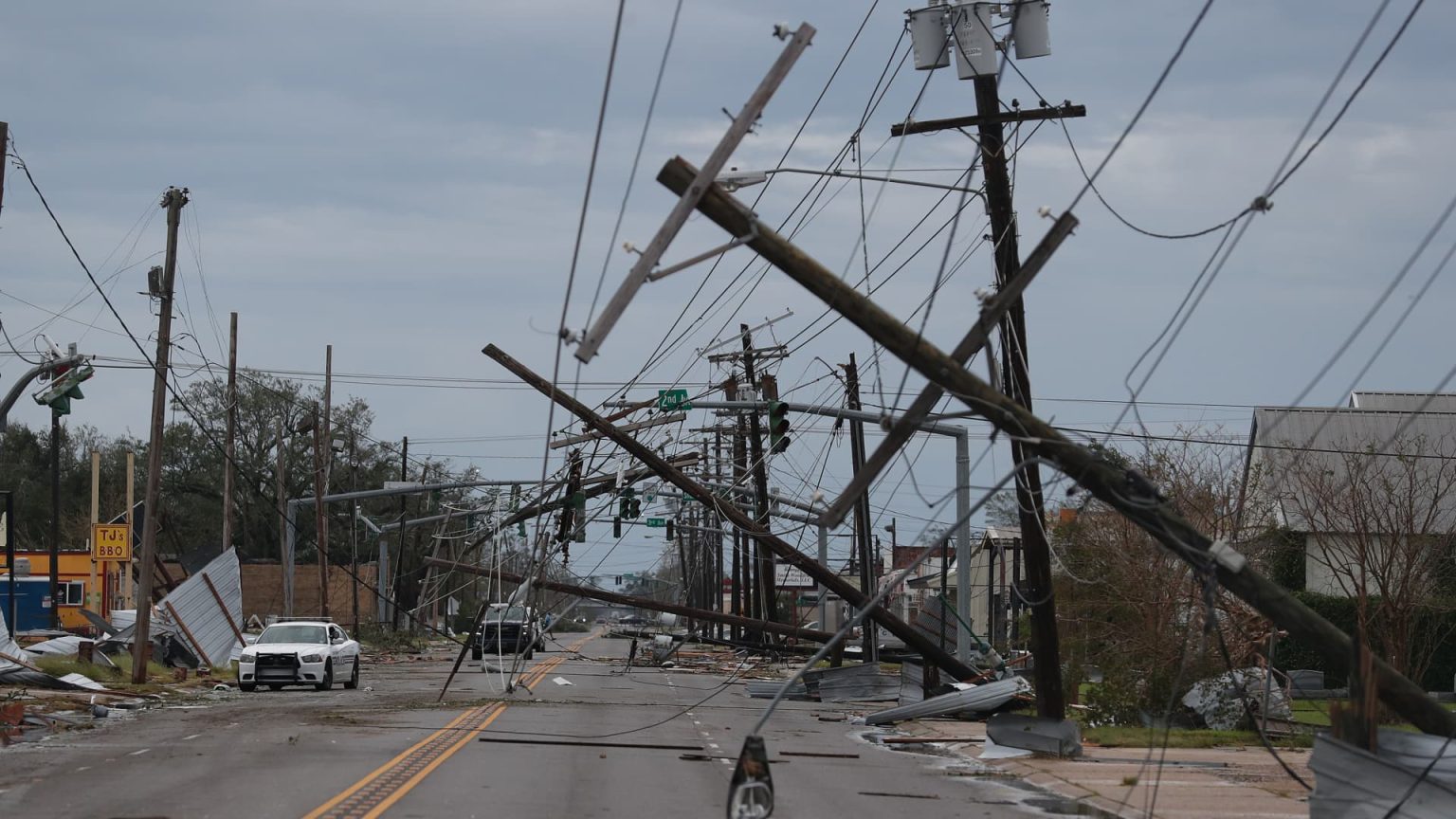The $1.2 trillion bipartisan infrastructure law passed in 2021 could not come a moment too soon. Roads, bridges, utilities, ports and airports across the country have been crumbling for decades. Connectivity keeps falling behind in an increasingly connected world. And climate change is adding new and growing stress.
The American Society of Civil Engineers, which has been trying to draw attention to the problems for years, says the law is the nation’s largest across-the-board investment in infrastructure in nearly a century.
“Today, communities in all 50 states are seeing the benefits of the bipartisan infrastructure law, as funds go toward fixing potholes, rehabilitating bridges, replacing lead pipes, and cleaning up the environment,” the group said.
Each year, CNBC’s America’s Top States for Business study rates every state’s infrastructure. It is the second most important category under this year’s methodology — just behind Workforce. Companies that are seeking to build new facilities and expand existing ones are looking for states that have what it takes to accommodate them.
We consider roads, bridges, railroads, ports, airports and utilities. We gauge the reliability of the power grid and broadband connectivity. We rate the states on sustainability — where is the most renewable energy, and which states are most at risk of floods, wildfires, and extreme weather? We consider which states have the most space available for development, and which have the most population within a day’s drive.
Some states didn’t need the help so desperately — America’s Best States for Infrastructure. That is not these states. As the new law comes into play, these are the ten states with the worst infrastructure in the nation.
10. West Virginia
With more than 137 million people within a day’s drive, West Virginia is America’s second-most accessible state, behind Ohio. But it is unable to fully take advantage of its prime location, in part because 20% of its bridges are in poor condition. That is the worst in the country, according to U.S. Department of Transportation data. The new infrastructure law includes at least $3.8 billion over the next five years to fix West Virginia’s decrepit roads and bridges.
2023 Infrastructure score: 158 out of 390 points (Top States Grade: D-)
U.S. population within 500 miles: 137,493,700
Bridges in poor condition: 20%
Roads in unacceptable condition: 15%
Broadband access: 80.4%
Power outages per year: 19 hours
9. New Hampshire
The Granite State hardly lives up to its nickname as far as infrastructure is concerned. The worst feature is the state’s outdated and underutilized airports. New Hampshire has already received nearly $32 million for airport improvements, including badly needed work at Manchester-Boston Regional Airport and Portsmouth International Airport. The money will go toward improvements and repairs of runways and terminals.
2023 Infrastructure score: 157 out of 390 points (Top States Grade: D-)
U.S. Population within 500 miles: 64,020,719
Bridges in poor condition: 8%
Roads in unacceptable condition: 9%
Broadband access: 95.9%
Power outages per year: 3.9 hours
8. Hawaii
No other state has the infrastructure challenges that Hawaii does. It is geographically isolated, making access to the rest of the population difficult. As an island chain, it obviously has no need for rail service. But other issues are more within its control, most notably roads. With nearly 40% of them in unacceptable condition, the Aloha State desperately needs the $1.5 billion it is set to receive for roads and bridges over the next five years under the infrastructure law.
2023 Infrastructure score: 154 out of 390 points (Top States Grade: F)
U.S. Population within 500 miles: 1,275,763
Bridges in poor condition: 6%
Roads in unacceptable condition: 38%
Broadband access: 97.7%
Power outages per year: 3.8 hours
7. Rhode Island
The Ocean State has been trying for decades to do something about its crumbling infrastructure. In 2016, it passed RhodeWorks, a $5 billion program whose goals included bringing 90% of the state’s bridges to structural sufficiency by 2025. That figure is now within striking distance, with 84% of its bridges fixed as of last year. But the roads are another story. With nearly half in unacceptable condition, according to the most recent data, the $1.8 billion in road and bridge funding Rhode Island is set to receive under the law will be more than welcome.
2023 Infrastructure score: 151 out of 390 points (Top States grade: F)
U.S. population within 500 miles: 67,462,719
Bridges in poor condition: 16%
Roads in unacceptable condition: 47%
Broadband access: 98.7%
Power outages per year: 7.5 hours
6. New Mexico
Nearly 20% of people in New Mexico lack access to high-speed broadband service, according to BroadbandNow Research, which ranks the state forty-third in the nation. The state is trying to catch up, with a $120 million pilot program called Connect New Mexico. The state also stands to receive $100 million for broadband coverage under the bipartisan infrastructure law.
2023 Infrastructure score: 145 out of 390 points (Top States grade: F)
U.S. population within 500 miles: 22,016,918
Bridges in poor condition: 5%
Roads in unacceptable condition: 9%
Broadband access: 80.8%
Power outages per year: 3.7 hours
4. (tie) Arkansas
Extreme weather, including hurricanes, tornadoes and winter storms, is testing Arkansas’ aging power grid. It is not responding well. According to the U.S. Department of Energy, Arkansans dealt with an average of more than 9 hours without power in 2021, the most recent data available. That puts Arkansas’ power grid at forty-third across the U.S. for reliability. Under the new infrastructure law, The Natural State stands to receive more than $270 million in resilience funding over the next two years.
2023 Infrastructure score: 141 out of 390 points (Top States grade: F)
U.S. population within 500 miles: 79,135,009
Bridges in poor condition: 5%
Roads in unacceptable condition: 14%
Broadband access: 78%
Power outages per year: 9.4 hours
4. (tie) Louisiana
No state is more susceptible to the changing climate than Louisiana. Nearly half of properties are at risk of flooding in the next 30 years, according to data compiled for CNBC by First Street Foundation. Louisianans spent more than three days without power on average in 2021, making the power grid America’s least reliable. The Pelican State gets just 4% of its power from renewable sources. Under the infrastructure law, Louisiana is set to receive more than $380 million for energy improvements over the next two years, and more than $15 million for flood mitigation.
2023 Infrastructure score: 141 out of 390 points (Top States grade: F)
U.S. population within 500 miles: 61,401,451
Bridges in poor condition: 12%
Roads in unacceptable condition: 25%
Broadband access: 86.8%
Power outages per year: 80.2
3. Mississippi
Only about 76% of Mississippians have access to broadband service, the lowest figure in the nation. Of the people who do have access, only about a quarter of them can get it at a low price, which BroadbandNow describes as $60 per month or less. In 2022, Mississippi became one of the last states to set up a dedicated broadband office to address the problem. Broadband Expansion and Accessibility of Mississippi, or BEAM, is administering more than $30 million in grants to fund ten projects across the state. The bipartisan infrastructure law will pour in another $100 million.
2023 Infrastructure score: 140 out of 390 points (Top States grade: F)
U.S. population within 500 miles: 75,349,015
Bridges in poor condition: 7%
Roads in unacceptable condition: 12%
Broadband access: 76.1%
Power outages per year: 19 hours
2. Alaska
At more than 665,000 square miles, Alaska is bigger than Texas and California combined. But little of that land is available for business development, according to data from CoStar Group. Office and industrial space are hard to come by as well. And fewer than 78% of Alaskans have broadband access. Alaska truly is the Last Frontier. The bipartisan infrastructure law aims to tame it a bit, with $3.9 billion in total funding allocated as of June 2023.
2023 Infrastructure score: 129 out of 390 points (Top States grade: F)
U.S. population within 500 miles: 608,947
Bridges in poor condition: 7%
Roads in unacceptable condition: 23%
Broadband access: 77.7%
Power outages per year: 6.3 hours
1. Maine
The New England cliché “You can’t get there from here” ceased being funny in Maine a long time ago. The state’s busiest airport, Portland International Jetport, is international in name only, with no direct flights to destinations outside the U.S. Of the $1.2 billion in bipartisan infrastructure law funding headed to Maine, the state has already received about $47 million for its airports. Another $20 million will upgrade the state’s underperforming ports.
2023 Infrastructure score: 126 out of 390 points (Top States grade: F)
U.S. population within 500 miles: 46,246,346
Bridges in poor condition: 14%
Roads in unacceptable condition: 12%
Broadband access: 92.6%
Power outages per year: 5.4 hours
Read the full article here












